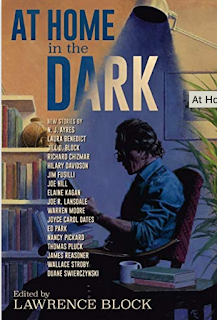“Lit with insight, affection, and the deep tenderness
that can accompany long-term grief, Sallis’s Sarah Jane is that most unusual of mysteries: one that investigates
the soul, walking.”
Author James Sallis (Drive; The Killer Is Dying) is often
called a master of noir, so it’s no surprise that Sarah Jane is a crime novel. But tenderness? Intense personal loss
as felt by a vulnerable woman? By the fourth page, Sarah Jane’s revealing the
hole in her heart, on the pages of a journal meant only for herself, as she
recalls her one and only, very private experience of childbearing:
“Six hours after I had her,
two or three in the morning, they told me they’d done all they could but my
baby had died. They brought her for me to hold, wrapped in a pink blanket. Her
face was ghostly white. Had she ever really lived? An hour after they left, I
was gone.”
Sarah Jane’s got a military
past as well as a hardscrabble youth, but most importantly she’s had firsthand
experience of how a “good man at heart” can become abusive of a woman. For
instance, there’s “R.H.,” who believed in what he was doing, and in himself,
but couldn’t handle when things didn’t go the way he wanted to. “He felt his
world unraveling, loose ends flying every whidch way That grinds on year after
year, you see the worst of people day by day, you change.”
This kind of insight works in
Sarah Jane’s favor when she becomes a small-town sheriff, the kind who both
understand the criminals on her turf and knows how to catch them. Tough and private,
she keeps most of her past secret from even her closest colleagues. And as her
story unwinds, there’s also her loyalty to the people that, against her will,
she comes to love – and that’s what drives her. In a rough little rural town
like Farr, where she settles almost against her will, any vulnerability in your
heart can threaten your life, one night or another.
Sarah Jane’s narrative of her
past and her confrontation with the present are interrupted by flashbacks to
her childhood on a chicken farm, and by reflections like this: “All stories are
ghost stories, about things lost, people, memories, home, passion, youth, about
things struggling to be seen, to be accepted, by the living.” Does she count
herself as ghost or living? How can anyone walk forward with such sorrow and
loss?
Little by little, one
sideways reference or clue after another, the crime at the heart of the book
emerges. And a silence builds, as large as the loss that Sarah Jane’s still
carrying. Is it Sarah Jane’s own, or does it belong to one of the dead men
she’s seen?
Lit with insight, affection,
and the deep tenderness that can accompany long-term grief, Sallis’s Sarah Jane is that most unusual of
mysteries: one that investigates the soul, walking.
PS: Looking for more mystery reviews, from cozy to very dark? Browse the Kingdom Books mysteries review blog here.
-->
PS: Looking for more mystery reviews, from cozy to very dark? Browse the Kingdom Books mysteries review blog here.









